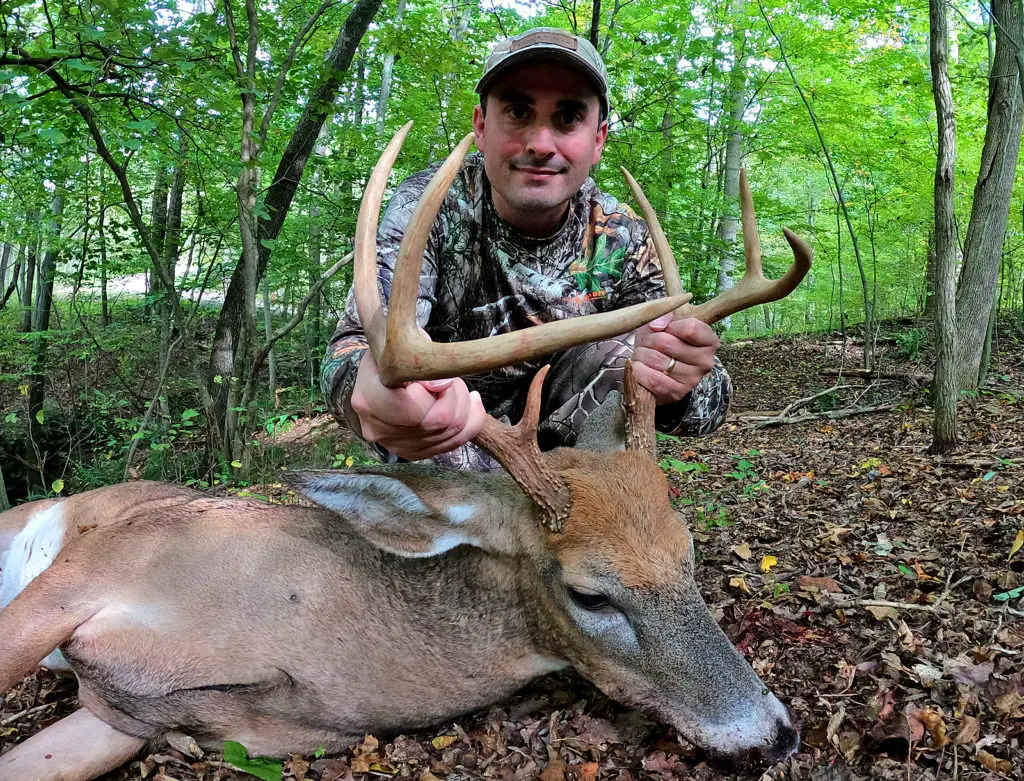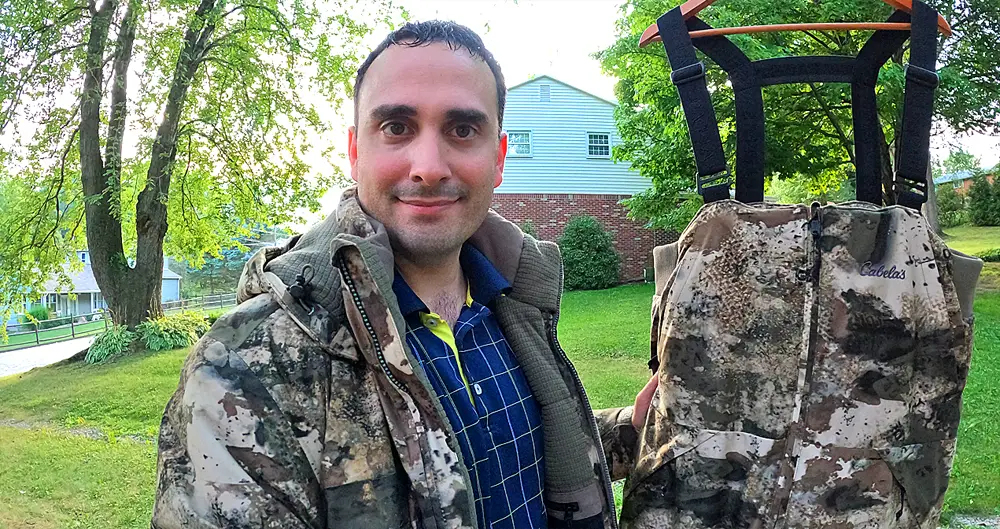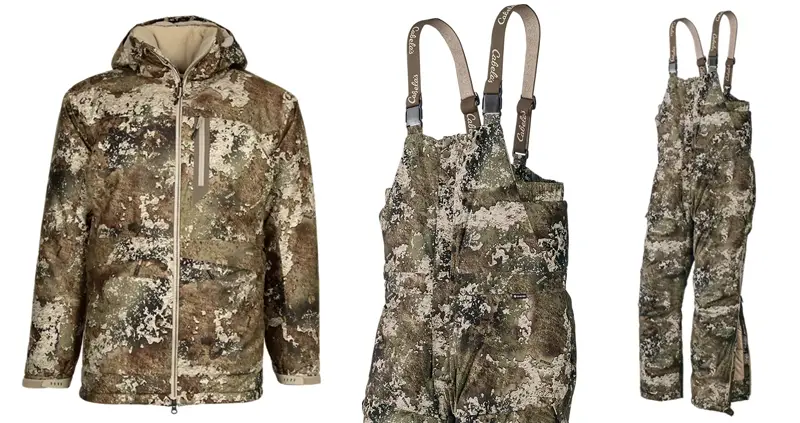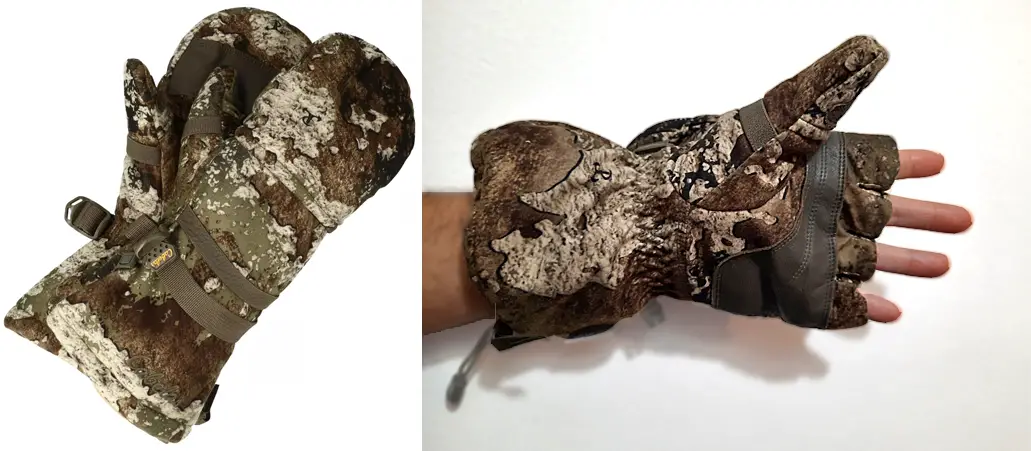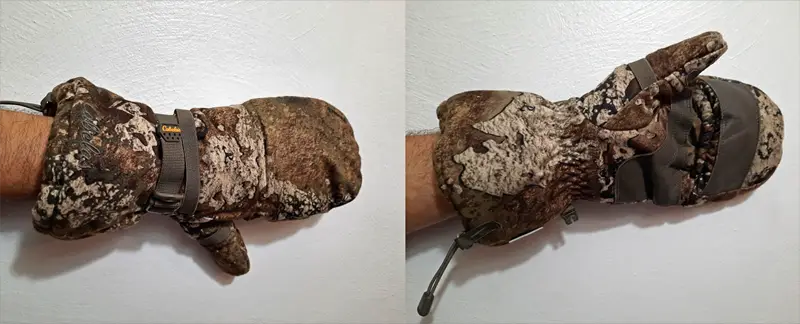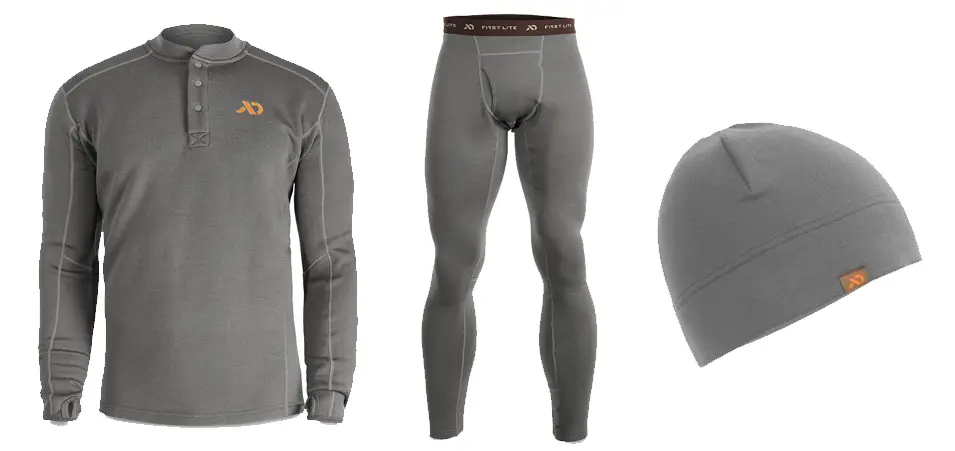Disclaimer: I bought these base layers with my own money though I do receive discounts provided by First Lite for industry professionals, they have also provided me with other gear, and I earn from qualifying purchases using links to their site, thanks to them for their support.
First Lite’s Furnace EXP 350 merino wool base layers may be the best available next to skin layer for hunting everything from deer to waterfowl on the market when it is super cold. That said, they are not magic. But they do the job about as well it can be done. I bought the Furnace Quarter Zip, Furnace Long Johns, and Furnace Beanie with my own money to hunt with. I proceeded to do more than hunt with them, I also lab tested them at 5 degrees Fahrenheit dry and wet to see if they could live up to the marketing.
Why Spend The Money?
I had long wanted to get the Furnace 350 base layers for hunting whitetail deer but it was duck hunting that actually gave me the needed push to spend the money and buy them. I would get cold while deer hunting with the cheaper less effective layers I was using, but it rarely seemed like a big enough deal. But with waterfowl hunting we would drag our gear into the woods and build a blind. By the time I sat down I was exhausted and soaking wet. Within a few hours I might get dangerously cold. I not only needed something warmer, I need something that kept me toasty when wet. Enter merino wool.
The Basics of Merino Wool
Merino wool comes from the merino sheep, it is unique because it has finer fibers than most wool. This enables you to have more wool with less volume and less itch. So, the gear is more compact and can be comfortably used next to skin. An ounce of merino wool takes up less space than an ounce of regular wool and keeps you just as warm. Perhaps just as important, those shorter fibers wick moisture away from your body so they evaporate and dry quicker than regular wool. And just like regular wool, merino minimizes odor, retains the majority of its insulating ability when wet, and is very durable. Listen to my podcast episode on Hunting Gear Insulation to go deeper or watch my video: What Is Merino Wool? Is It REALLY Better Than Regular Wool?
Why The Furnace 350?
Lots of companies make great late season heavy base layers, like Sitka Gear, Cabela’s, Ice Breaker, and many more. I investigated and even tested several other options, but I settled on the First Lite Furnace because it was essentially solid merino wool, they have a great reputation, and it was super heavy duty. All the other great base layers have their place, but for me on days so cold that your game is frozen solid by the time you get it home, the Furnace felt like the best match. For base layers that are ideal when the weather isn’t quite so cold, check out my review on the First Lite Kiln 250 Merino Base Layers.
Furnace Features
First and foremost, the Furnace pieces are thick. They use First Lite’s Merino-X 350g EXP weight fabric, which essentially means there is 350 grams of merino wool per square meter of fabric. That equates to the Henley being over one pound in weight and the Long John being just under a pound. That is kind of mind boggling that a base layer shirt could weigh a pound, but that is the best pound you can wear in the cold.
Henley Features
-
- True to size: Purchase your normal size to wear over or under other layers
- 5 micron, superfine, merino wool
- 95% merino / 5% spandex
- Expedition weight, fleeced Merino fabric for extreme cold
- Snap closure, quarter length Henley collar
- Modified raglan sleeve moves seams out from under backpack shoulder straps
- Ergonomic cuff with thumb loops
- Flatlock seams
- Machine wash, line dry
Long John Features
-
- True to size: Purchase your normal size to wear over or under other layers
- 5 micron, superfine merino wool
- 95% merino / 5% spandex
- Expedition weight, fleeced Merino fabric for extreme cold
- Full length
- Jacquard waistband
- Fully functional fly
- Flatlock seams
Henley Overview
The First Lite Furnace Henley is very nicely put together. It does not look or feel like long underwear, in fact I have worn it to the office as a long sleeve shirt on really cold days (I got the gray one pictured at the top of this post). It looks really nice and can pass as a quality three button winter shirt. I was not too hot either, which is another one of the strengths of Merino wool, it helps regulate temperature. Think about how God made these sheep, the same wool needs to keep them warm on super cold days but not overheat them on warm days. It works just like that for us. Full discloser, my Henley came with a broken snap. I contacted First Lite and they gave me a return label and I had the old one sent back with a new one in hand very quickly, no out of pocket cost. The Furnace is also available in a quarter zip.
Long Johns Overview
I am very picky about Long Johns because I want a lot of warmth, but I do NOT want them to inhibit my movement at all, especially around the knees. I was impressed at how good the Furnace Long John did in this area, they are very thick and fit snug, but they create very minimal tension around my knees, and I have very good range of movement. The pro here is that I can get away with fewer layers on active hunts so in the end I have less bulk because I am wearing these. Merino also shines extra bright when used to make pants because often your seat gets wet when you sit down, and these keep you warmer and dry faster.
Beanie Overview
Unfortunately, I am not able to sing the praises of the beanie the same way I can the other pieces. The marketing for the Furnace Beanie lead me to believe that this was First Lite’s heavy duty cold weather head gear option. And it is not that, not even close. The beanie functionally serves as a 350 merino base layer for your head. If you wear this under your heavy duty wind proof head gear then you will be super warm. But wearing this alone is just like wearing the Long John alone, you need other layers over it. The beanie works great as a stand-alone piece in the early hunting season or during spring turkey season, but it does nothing to stop the wind or weather on cold late season days. It is a great Merino wool layering beanie for the late season, use it for that purpose and you will not be disappointed. I also did a full video review of the First Lite Tundra Balaclava, that is a serious piece of head warming gear there.
My Experience In The Field
This again is where I need to reiterate that the Furnace base layers are not magical. They work great in the field. They are the warmest thing I’ve ever put on, but to get the most out of them you need to combine them with other good layers like a good pair of hunting bibs. I also did a podcast episode on the technical qualities that make a good pair of bibs and outerwear in general.
You need to have something wind resistant, or the wind is going to make you cold. You need layers that breathe, or you will end up wet. You need to be mindful of how you are hunting, you likely do not want to wear these on warm days on long hiking hunts. That said, they did everything I wanted them to do. The Furnace performed very well. I used them on snowy days, on 8 degree duck hunts, and more. They are excellent. And they are a great choice to pair with the First Lite Refuge Parka to stay dry and warm on the coldest of the cold days. For an even heavier duty merino wool option, check out my review of the First Lite Rugged Wool Zip Hoody.
My Lab Tasting
It is easy to subjectively say these performed great in the field, but I wanted more than that, especially for the price tag. So I did some testing. In one test I pulled together all of the best base layers I could put my hands on, took them out on a 5 degree morning and did an experiment. I filled paper travel coffee mugs with boiling water, wrapped one with each base layer, place the wrapped mugs and placed them inside of a plastic bag to act as a barrier layer and then came back in an hour to see which base layer kept the water the warmest.
I calculated the data and then repeated the test after soaking each layer in a bucket of water to see how they would perform when wet. You can watch the video below to see the full test. In both the wet and the dry test, the First Lite Furnace beat all of the competition.
Pros, Cons, and Care Tips
Pros
- Super warm
- Odor resistant
- Wicks moister away
- Dries fast
- Soft and comfortable
- Helps minimize over heating
- Not overly bulky
- Flame resistant
Cons
Care Tips
Merino wool is a natural material, and it can still contain traces of natural oils left in it which can cause a strange smell when wet. My Long John had no odor whatsoever, it was perfect. My Henley however had a very strange smell when it got wet then it went away when it dried. This faded with washing and use, after 5 or 6 washes I stopped noticing it. You can machine wash them but do not put them in the drier, you risk shrinking them. I just hang them up somewhere warm with good ventilation and they dry very fast. You should definitely wash your Merino wool gear, it gets dirty and gross after wearing just like anything else, it just takes a little longer to stink.
Conclusion
I am a big fan of Furnace layers, and I heartily recommend them to anyone in the market for high end layers to hunt in extreme cold. You would be hard pressed to find better gear. Check out the reviews for even more input on the First Lite Furnace Henley and the First Lite Furnace Long John.
Be sure to listen to The New Hunters Guide Podcast, and check us out on YouTube.
Till next time. God bless you, and go get em in the woods!
George Konetes Ph.D. – Founder and Host of the New Hunters Guide.
The New Hunters Guide is simply what George wishes he would have had when learning how to hunt; a single place to get practical hands on knowledge about different kinds of hunting, gear, strategy, and tips that can improve your comfort and fun factor in the woods.
